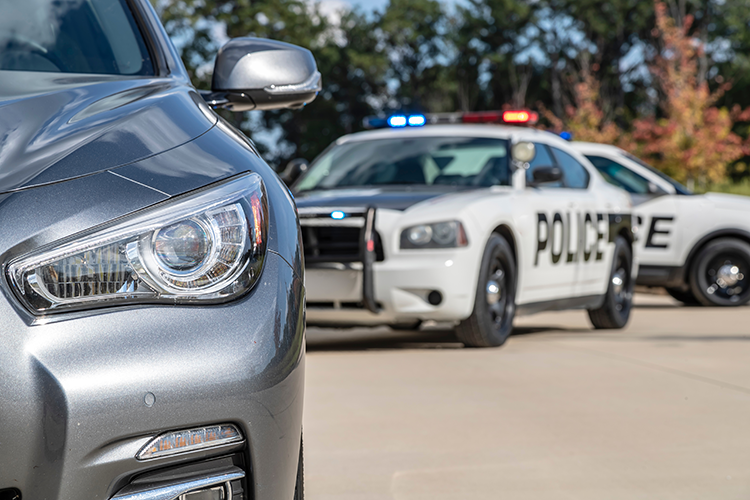En banc 2nd Circuit upholds pat-down search; five judges call for reevaluation of traffic-stop precedent

Image from Shutterstock.
An en banc federal appeals court has upheld the pat-down search of a man during a traffic stop in a case that drew amicus briefs from several organizations that argued against the government’s position in the case.
The appeals court majority ruled Monday that the February 2016 pat down of car passenger Calvin Weaver was reasonable under the Fourth Amendment, and the court was rejecting “novel arguments to the contrary.” Law.com has coverage.
A Syracuse, New York, police officer found a loaded semiautomatic handgun and cocaine during the search. Weaver appealed his conviction for being a felon in possession of a firearm.
Judge William Nardini wrote the majority opinion, joined in full by six other judges. Two other judges concurred in the result and three judges dissented.
The appeals court majority said a police officer’s subjective intent has no weight in determining whether a search occurs, and courts must consider the totality of circumstances when determining whether an officer has a reasonable suspicion that a suspect is armed and dangerous.
The concurrence argued the decision by the New York-based 2nd U.S. Circuit Court of Appeals was “needlessly broad” but said precedent required a ruling for the police officer.
The concurring judges and dissenters all raised concerns about precedent that allows police officers to make traffic stops based on pretextual reasons.
They argued the U.S. Supreme Court should revisit its 1996 decision Whren v. United States, which held that that any traffic violation by a driver provides probable cause for a stop. The subjective motivation of the officers is irrelevant when evaluating an alleged Fourth Amendment violation, the Supreme Court concluded in Whren.
“While Whren states an important and correct general rule that removes an officer’s subjective intentions from Fourth Amendment scrutiny (and the reach of the exclusionary rule), there must be an exception for clear cases of racial bias,” the concurrence argued.
Officers pulled Weaver’s car over for failing to turn on his indicator lights 100 feet before making a turn. Several groups submitted amicus briefs opposing the government position, including the NAACP Legal Defense and Educational Fund and the Center for Constitutional Rights, according to a preview of the case by Reuters.
Before the stop, officers had observed Weaver walking along a street, looking at their unmarked police car, tugging up his pants and getting into a sedan. The officers later stopped the vehicle in which Weaver was riding in an area known for gun violence. One officer saw Weaver push down his pelvic area and squirm during the top.
Weaver was ordered to get out of the vehicle and to stand with his hands on the trunk and his feet spread apart. Weaver pressed his pelvis against the vehicle and protested that the ground was slippery when told to step back from the car.
“Our ordinary observer might then stop and wonder: wait, is that all it takes?” wrote dissenter Guido Calabresi, in an opinion joined by the two other dissenters. “A look and a tug, a delayed turn signal, and adjusting yourself in your seat, and now you are asked to step out and spread eagle across the trunk of a car? The ordinary observer might then ask: Could this happen to me?
“Because this is a discomforting thought, I think many people would go on to find ways to distinguish themselves from Weaver. Unlike Weaver, many are fortunate not to live in so-called ‘high-crime areas.’ And many might comfort themselves with the thought that they have nothing to fear from the police. The police don’t look for people like us! Some observers might even tell themselves that the color of their skin would preclude police officers from forming such a suspicion about them in the first place.
Calabresi said the case “reflects the deeply troubling state of our Fourth Amendment law.”



